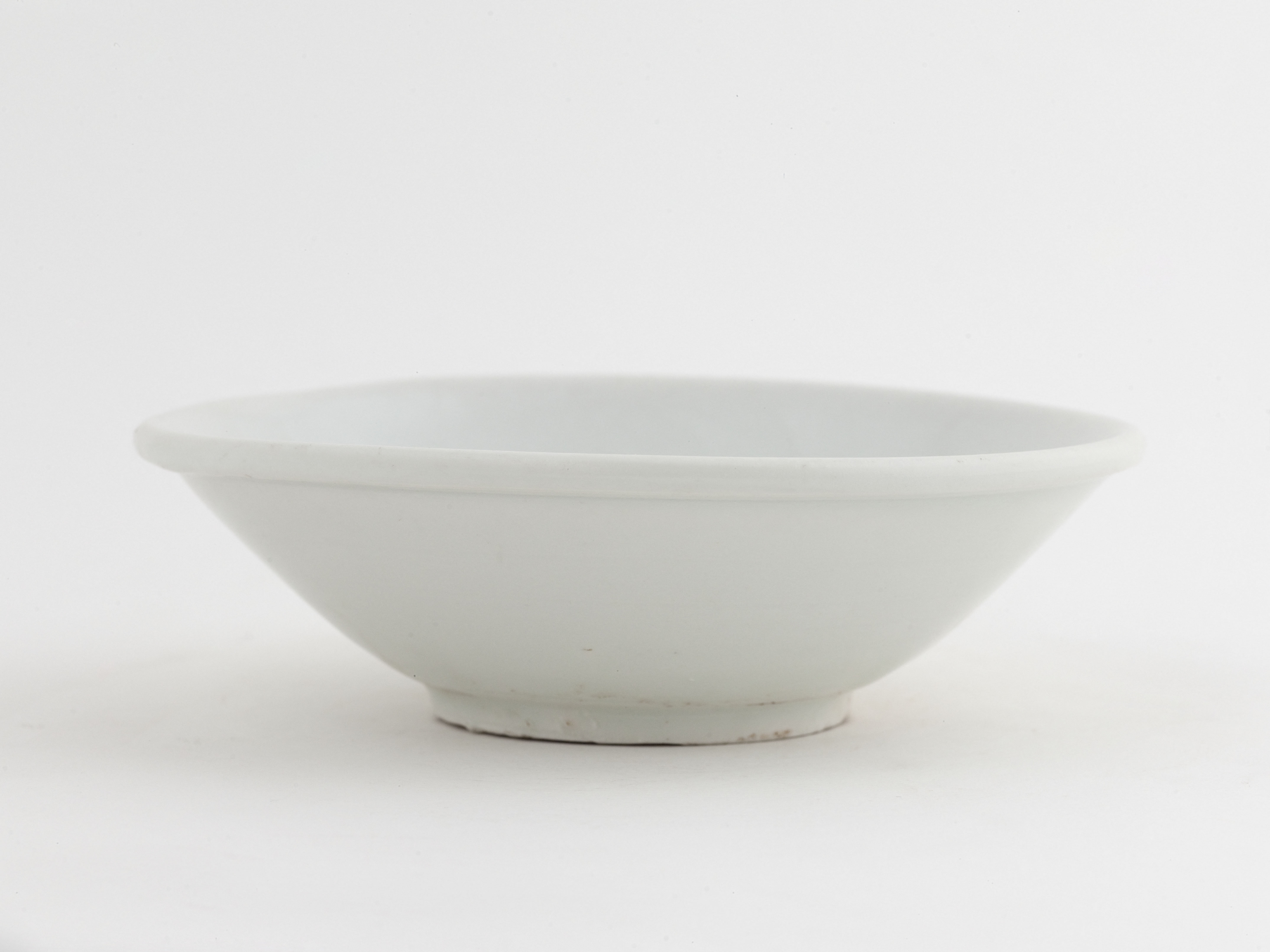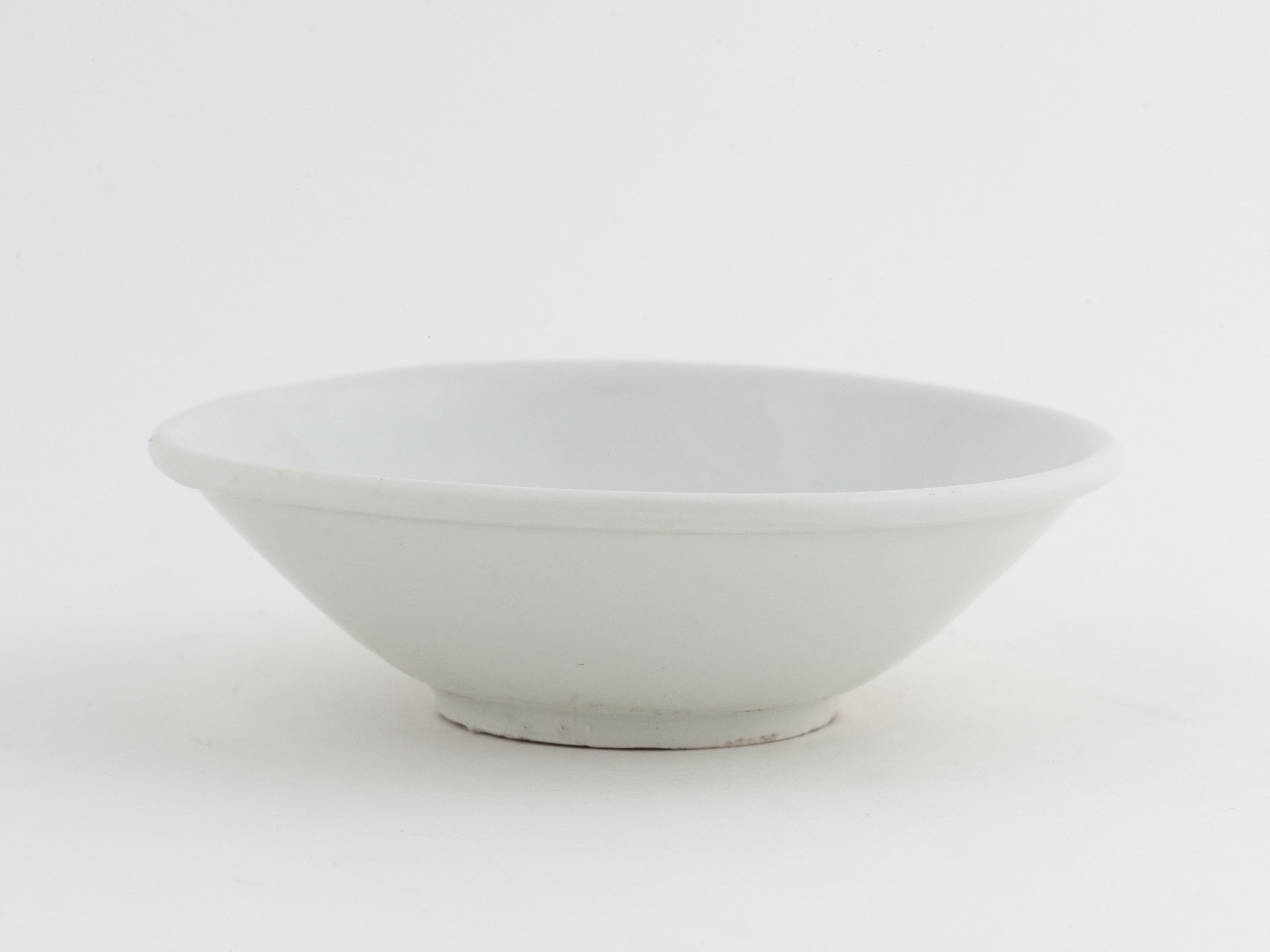
Bol
Porcelaine, Céramique tournée, Glaçure = Couverte
Vaisselle et ustensile de cuisine, Récipient (vaisselle), Bol
Don manuel : Laveaucoupet, Paul-François de
M.C. 9554
Porcelain, invented in northern China in the 6th century AD, was originally reserved for the elite. In the Tang dynasty 唐 (618-907), however, it began to be produced north of the Huai River 淮 at numerous kilns and rapidly spread throughout China and abroad. The main centre of production was Xing 邢, emulated, from the last third of the 9th century, by Ding 定 (named after the prefectures to which they were attached under the Song). These kilns south of Hebei 河北 were located at the border between the sub-prefectures of Lincheng 臨城 and Neiqiu 内丘, for the former, and in the sub-prefecture of Quyang 曲陽 around the village of Jianci 澗磁, for the latter. In spite of excavations carried out at each of their locations, it is sometimes difficult to distinguish their wares.
The bowl M.C. 9554 is has low, flat “bi disk” 璧 foot, so named after an ancient type of jade artefact, a right wall inclined at an angle of 45°, a large, curved lip and a blueish-tinged glaze. These features date this piece to the last third of the 9th century. The prominent lip may attribute it to the Ding kilns.
As the Xing kilns declined, the Ding kilns took over under the Northern Song dynasty (960-1127).
